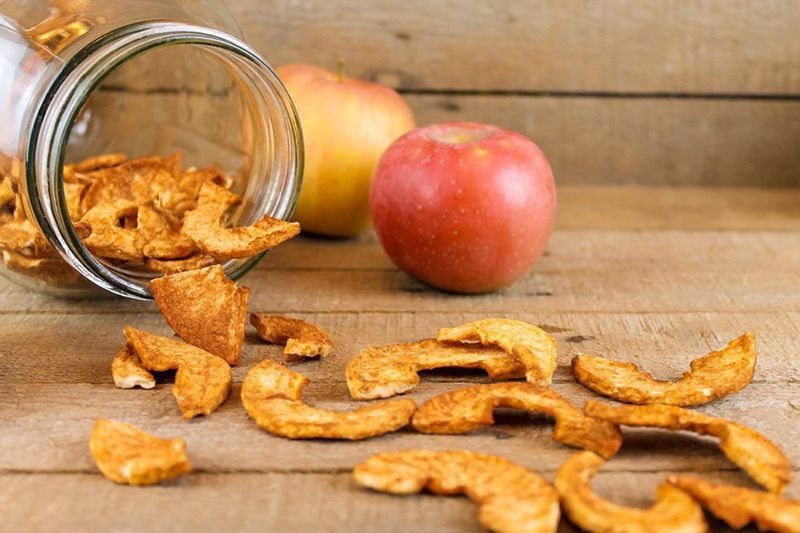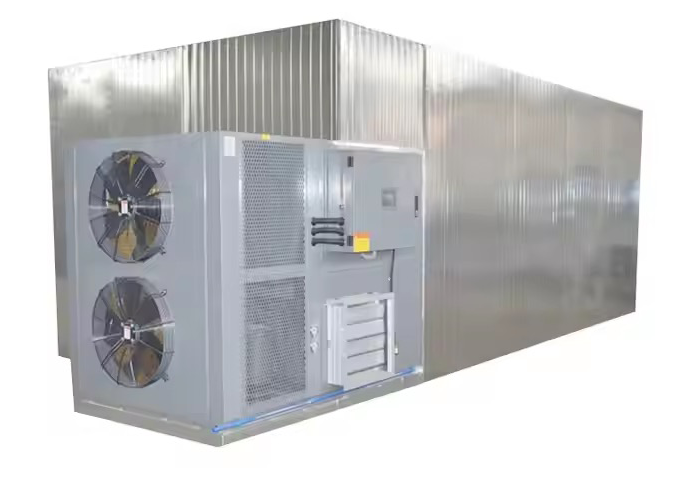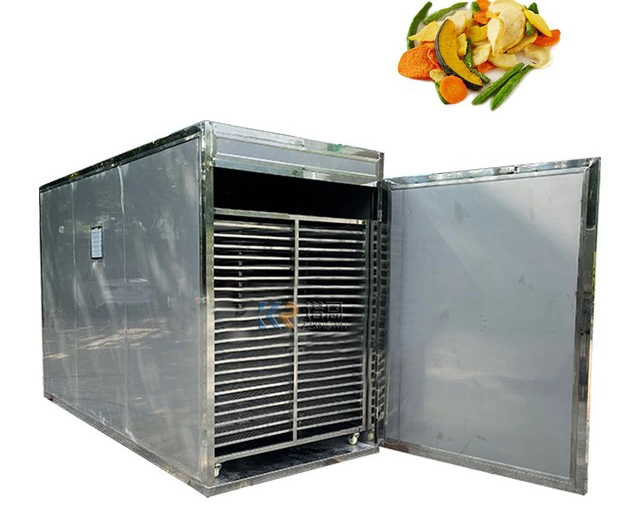
Content Menu
● Understanding Food Dehydrators
>> How Does a Food Dehydrator Work?
● Benefits of Using a Food Dehydrator
● Common Uses for Food Dehydrators
>> Additional Uses
● How to Use a Food Dehydrator
● Heat Pump Dryers vs. Food Dehydrators
>> Do Heat Pump Dryers Need Plumbing?
● Choosing the Right Food Dehydrator
● Common Mistakes When Using Food Dehydrators
● Conclusion
● FAQs
>> 1. What types of foods can I dehydrate?
>> 2. How long does it take to dehydrate food?
>> 3. Can I use my oven instead of a dehydrator?
>> 4. Is it safe to dehydrate meat?
>> 5. Do I need special trays for my dehydrator?
● Citations:
When it comes to food preservation, food dehydrators are essential tools that allow users to remove moisture from various foods, extending their shelf life and enhancing flavors. This article will explore the intricacies of food dehydrators, their operation, benefits, and the common question of whether a heat pump dryer needs plumbing for installation.

Understanding Food Dehydrators
A food dehydrator is an appliance designed to remove moisture from food, effectively preserving it. This process not only extends the shelf life but also concentrates flavors, making dehydrated foods delicious and nutritious.
How Does a Food Dehydrator Work?
Food dehydrators utilize a combination of heat and airflow to evaporate moisture from food. The main components include:
- Heating Element: Provides the necessary heat to evaporate moisture.
- Fan: Circulates hot air around the food, ensuring even drying.
- Trays: Where the food is placed for drying; multiple trays allow for larger batches.
- Vents: Allow moisture to escape, preventing condensation inside the unit.
The typical temperature range for dehydrating food is between 95°F (35°C) and 160°F (71°C), depending on the type of food being processed. For instance, fruits generally dehydrate well at higher temperatures (around 135°F), while herbs require lower settings (around 95°F) to maintain their delicate flavors and nutrients.
Benefits of Using a Food Dehydrator
Using a food dehydrator offers numerous advantages:
- Extended Shelf Life: Dehydrated foods can last for months or even years when stored properly.
- Nutrient Retention: Dehydration preserves many nutrients that might be lost during cooking methods like boiling or frying.
- Flavor Enhancement: Removing moisture intensifies flavors, making fruits taste sweeter and herbs more aromatic.
- Cost Efficiency: Buying fruits and vegetables in bulk when they are in season and dehydrating them can save money in the long run.
- Healthy Snacking: Homemade dehydrated snacks are often healthier than store-bought options, as they contain no additives or preservatives.
Common Uses for Food Dehydrators
Food dehydrators can be used for a variety of foods:
- Fruits: Apples, bananas, mangoes, and berries can be dried into snacks or used in baking.
- Vegetables: Carrots, tomatoes, and bell peppers can be dehydrated for soups or stews.
- Herbs: Basil, thyme, and parsley retain their flavor when dried properly.
- Meat: Jerky can be made by marinating meat before dehydrating it at safe temperatures.
Additional Uses
Beyond these common applications, food dehydrators can also be used to create:
- Dried Flowers: Preserving flowers for decorative purposes is another creative use of food dehydrators.
- Fruit Leathers: Blending fruits into a puree and then dehydrating them creates healthy fruit leathers that are great for kids' snacks.
- Yogurt: Some advanced models allow you to make yogurt by maintaining a warm environment conducive to fermentation.

How to Use a Food Dehydrator
Using a food dehydrator is straightforward:
1. Prepare the Food: Clean and slice the food into uniform pieces to ensure even drying. For fruits like apples or pears, consider soaking them in lemon juice to prevent browning.
2. Set Up the Dehydrator: Place the prepared food on the trays without overcrowding them. Ensure there is enough space between pieces for air circulation.
3. Adjust Temperature and Time: Set the appropriate temperature based on the type of food. Most fruits take about 6–12 hours to dehydrate fully. Vegetables typically take less time than fruits due to their lower sugar content.
4. Monitor Progress: Check periodically to ensure even drying. You can test if the food is done by checking for moisture—if it fogs up a glass when placed inside, it needs more time.
5. Store Properly: Once dried, allow the food to cool before storing it in airtight containers. Glass jars or vacuum-sealed bags work well for long-term storage.
Heat Pump Dryers vs. Food Dehydrators
While discussing heat pump dryers, it's important to clarify that these appliances are primarily designed for laundry drying rather than food preservation. However, understanding their installation requirements can help clarify common misconceptions.
Do Heat Pump Dryers Need Plumbing?
Heat pump dryers do not require plumbing for installation. Unlike traditional vented dryers that expel moist air outside through ducts, heat pump dryers collect moisture in a reservoir that needs to be emptied manually after each cycle. This design allows them to be installed in various locations without needing direct access to plumbing systems.
Choosing the Right Food Dehydrator
When selecting a food dehydrator, consider several factors:
- Capacity: Depending on your needs, choose a model with sufficient tray capacity. Larger families or those who plan on preserving large quantities may benefit from larger units with more trays.
- Temperature Control: Some models offer adjustable temperature settings which provide better control over the dehydration process for different types of foods.
- Fan Placement: Dehydrators with fans located at the back tend to provide more even drying compared to those with bottom-mounted fans.
- Ease of Cleaning: Look for models with removable trays that are dishwasher safe or easy to clean by hand.
Common Mistakes When Using Food Dehydrators
To achieve optimal results when using a food dehydrator, avoid these common mistakes:
- Overloading Trays: Placing too much food on trays can restrict airflow and lead to uneven drying. Always leave space between pieces.
- Inconsistent Slicing: Cutting food into uneven sizes results in varying drying times; uniform slices ensure even dehydration.
- Ignoring Temperature Guidelines: Each type of food has specific temperature requirements; ignoring these can lead to subpar results or spoilage.
Conclusion
Food dehydrators are invaluable tools for anyone looking to preserve foods while enhancing their flavors and nutritional value. They operate by circulating hot air around food items at controlled temperatures, effectively removing moisture without compromising quality. On the other hand, heat pump dryers offer convenience in laundry care without requiring plumbing connections.
In summary:
- Food dehydrators extend shelf life and enhance flavor.
- Heat pump dryers simplify laundry tasks without plumbing needs.
By understanding these appliances' functions and benefits, users can make informed decisions about their kitchen equipment and laundry solutions alike.

FAQs
1. What types of foods can I dehydrate?
You can dehydrate fruits, vegetables, herbs, meats (like jerky), and even some grains or nuts depending on your dehydrator's capabilities.
2. How long does it take to dehydrate food?
Dehydration times vary based on the type of food and thickness of slices but generally range from 4 to 12 hours.
3. Can I use my oven instead of a dehydrator?
While ovens can be used for dehydration at low temperatures, they are less efficient than dedicated dehydrators due to limited airflow and capacity.
4. Is it safe to dehydrate meat?
Yes, but it's crucial to cook meat first to an internal temperature of 165°F (74°C) before dehydration to kill any harmful bacteria.
5. Do I need special trays for my dehydrator?
Most dehydrators come with trays designed specifically for drying foods; however, you can purchase additional trays if needed for larger batches.
Citations:
[1] https://www.mitchellcooper.co.uk/what-is-a-dehydrator-commercial-buying-guide
[2] https://www.goodhousekeeping.com/appliances/a31904157/what-is-a-dehydrator/
[3] https://cosori.com/blogs/blog/how-does-a-food-dehydrator-work
[4] https://www.reliant.co.uk/blog/do-you-need-to-plumb-in-a-heat-pump-dryer/
[5] https://markselectrical.co.uk/connect/what-is-a-heat-pump-tumble-dryer
[6] https://www.youtube.com/watch?v=mtDzdYoyeR8
[7] https://nchfp.uga.edu/how/dry/drying-general/food-dehydrators/
[8] https://www.webmd.com/diet/dehydrating-food-good-for-you
[9] https://www.localsearch.com.au/guides/plumbers/do-heat-pump-dryers-need-plumbing
[10] https://www.youtube.com/watch?v=Zl4wTcCPJu0
[11] https://www.youtube.com/watch?v=rR2G5UO-5Ms











